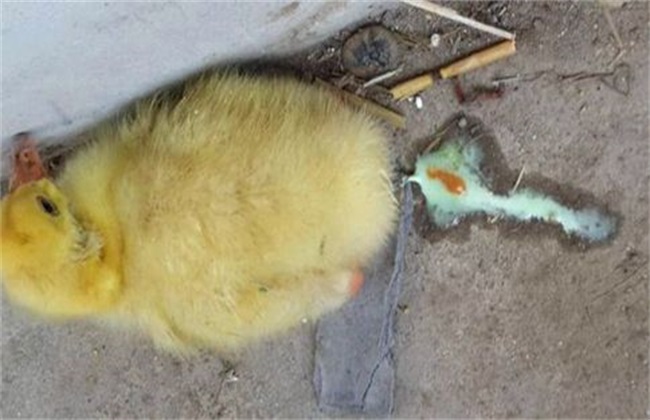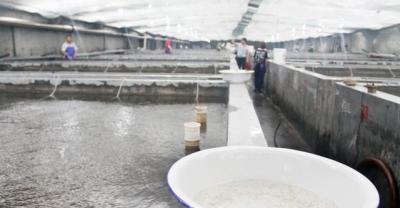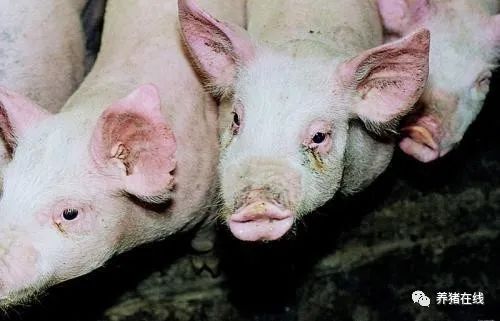is a kind of infectious Learn more about is a kind of infectious
-
What is the symptom of chicken infectious bronchitis? How to treat it? What kind of medicine should I use?

Infectious bronchitis is an acute and highly contagious respiratory infectious disease in chickens caused by infectious bronchitis virus. What are the symptoms of chicken infectious bronchitis? How to treat it? What kind of medicine should I use? 1. Due to climate and various reasons, eggs
2020-11-11 Chicken contagious bronchitis symptoms yes what how -
Prevention and treatment of Infectious bursal Disease in chickens

Prevention and treatment of Infectious bursal Disease in chickens
2018-07-04 -
Common infectious diseases of ducks in summer

Common infectious diseases of ducks in summer
2019-07-05 -
Prevention and control of respiratory diseases in caged laying hens in autumn and winter

Prevention and control of respiratory diseases in caged laying hens in autumn and winter
2018-07-25 -
How do breeding friends judge chicken infectious synovitis?

How about the prevention of chicken infectious synovitis? 2017-12-14 Avian doctor Little Prince Chicken Infectious synovitis, also known as synovial cyst mycoplasma, is infected by Mycoplasma synovium.
2019-02-26 -
Prevention and treatment of Avian Infectious bronchitis

Prevention and treatment of Avian Infectious bronchitis
2018-06-29 -
Application of Interferon in the treatment of Infectious Canine Hepatitis

Infectious canine hepatitis is an acute septic infectious disease caused by adenovirus. It was characterized by necrosis in the center of hepatic lobule, intranuclear inclusion bodies in hepatic parenchyma cells and cortical cells, and prolonged bleeding time. Infectious canine hepatitis does serious harm to dogs and causes great economic losses to the dog industry. The virus has strong resistance and can survive in the soil for a long time under the condition of low temperature. it still has pathogenicity after 10 to 14 days, and can survive in the dog nest for a long time. Sick dogs and recovered dogs with virus are the source of infection of the disease, and their blood secretions and excretions
2019-01-16 -
Classification of susceptibility to disease in dogs

In fact, dogs can be divided into several categories: malignant infectious diseases, non-malignant diseases, functional diseases and nutritional diseases. 1. Malignant infectious diseases: mainly dog distemper, canine parvovirus, infectious hepatitis, rabies and other highly contagious and fatal diseases. Rabies is a zoonotic disease. there are many ways of transmission of these diseases and the cure rate is relatively low. although there is now a corresponding vaccine, puppies and dogs whose resistance to epidemic prevention has declined sharply due to some reasons (cured at the beginning of a serious illness and giving birth to puppies.
2019-01-16 -
Drugs for infectious diseases of respiratory system in pigs

Infectious diseases of pig respiratory system are common diseases in pig production, most of which are rhinitis and pneumonia. the common symptoms are cough, sneezing and dyspnea. Pigs of different ages and breeds can be infected, and the speed of infection is fast and the number is large. Infectious diseases of pig respiratory system have the following characteristics: first, the pathogen is complex, often not caused by the same or several bacteria, but closely related to a variety of factors in the environment, only when certain environmental, management and feeding factors change.
2019-01-16 -
Prevention and treatment of infectious serositis in ducks

Prevention and treatment of infectious serositis in ducks
2018-07-14 -
With the change of seasons, infectious pig diseases occur frequently, let's see how to diagnose several common diseases!

In late spring and early summer, the seasons change, the climate is changeable, all kinds of epidemic diseases are high, and pigs are easy to be infected with epidemic diseases. A group of diagnosis and treatment methods of infectious pig diseases are specially arranged for farmers' reference. 1. In pig production, we often encounter the following typical dysentery.
2020-11-11 Season change contagion pig disease multiple look breeding talent -
Diagnostic measures of common infectious pig diseases

In late spring and early summer, the seasons change, the climate is changeable, all kinds of epidemic diseases are high, and pigs are easy to be infected with epidemic diseases. In pig production, pig diseases such as typical digestive tract symptoms such as dysentery are often encountered, which are mainly caused by viruses.
2020-11-08 Common contagious pig disease diagnosis measures late spring early summer -
Integrated control of infectious silkworm disease

In the process of sericulture, it is often due to the occurrence of infectious silkworm disease, resulting in poor cocoon harvest and cocoon quality decline. Therefore, disinfection and disease prevention must run through the whole process of sericulture. On the basis of focusing on the disinfection before sericulture, we should do a good job in disease prevention and disinfection after sericulture, and carry out comprehensive prevention and control in order to completely eliminate bacteria and put an end to the occurrence of infectious silkworm diseases. First, eliminate diseased silkworms in time. Many infectious silkworm diseases, such as midgut purulent disease, viral malacia, particle disease, bacterial gastrointestinal disease and so on. Silkworms tend to behave at the initial stage of infection with the above diseases.
2019-01-16 -
Prevention and control measures of common respiratory diseases in chickens

Prevention and control measures of common respiratory diseases in chickens
2018-09-07 -
How to do a good job in epidemic prevention of chickens with high incidence of various infectious diseases in spring

How to do a good job in epidemic prevention of chickens with high incidence of various infectious diseases in spring
2018-07-11 -
Problems in the use of immune drugs in chickens

With the development of broiler breeding industry, many farmers regard raising broilers as the way to get rich, but there are still two major problems in raising broilers. (1) blindly copying outdated immunization procedures: many chicken farmers are immunized with Newcastle disease Ⅳ vaccine only once, until they are sold and no longer immunize other vaccines; some chicken farmers develop infectious bursal disease in each batch of chickens, and the yolk fluid for treatment and injection contains Newcastle disease antibodies, thus interfering with the immune effect of Newcastle disease vaccine; in infectious bronchitis epidemic areas, absolutely
2019-01-16 -
Common diseases of miniature pigs and their prevention and treatment

Miniature pigs in China generally belong to older local extensive breeds, with strong adaptability, coarse feed tolerance, strong resistance and other characteristics, as long as regular vaccination, strengthen feeding management, infectious diseases can be avoided. Prevention of common infectious diseases China's common infectious diseases have been few, most have been controlled, occasionally epidemic, generally take culling treatment. Because of the low economic value of treatment, disease prevention is one of the three key links in miniature pig breeding. Do a good job in preventing several common infectious diseases in pigs
2019-01-16 -
Common diseases and prevention of salmon and trout

Salmon and trout are the main cold-water fishes in the world, which are generally cultured in intensive and intensive way, so all kinds of fish diseases are easy to prevail, including viral fish disease, bacterial and fungal fish disease and parasitic fish disease. 1. Viral diseases. The pathogen of infectious pancreatic necrosis is infectious pancreatic necrosis virus. Vertical transmission: eggs and semen of infected parent fish; horizontal transmission: feces, urine and secretions of diseased fish bring the virus into the water
2019-01-16 -
How many key points have you mastered in the prevention and treatment of porcine infectious rhinitis?

How many key points have you mastered in the prevention and treatment of porcine infectious rhinitis?
2020-06-04 -
Epidemic characteristics and Countermeasures of Chicken Farm Blight

The main results are as follows: 1 at present, the epidemic characteristics of epidemic diseases in chicken farms are accelerated. The most prominent characteristics of large-scale chicken farming are large production scale and large number of chickens. The increase in the number of chickens has led to the acceleration of the spread of the disease among chickens. The disease resistance decreased. In large-scale chicken farms, producers will increase the stress factors of chickens in order to give full play to the production potential of chickens and keep the flocks in a highly tense production state, which will lead to abnormal endocrine and decreased disease resistance of sensitive chickens. Some in free-range conditions
2019-01-15
